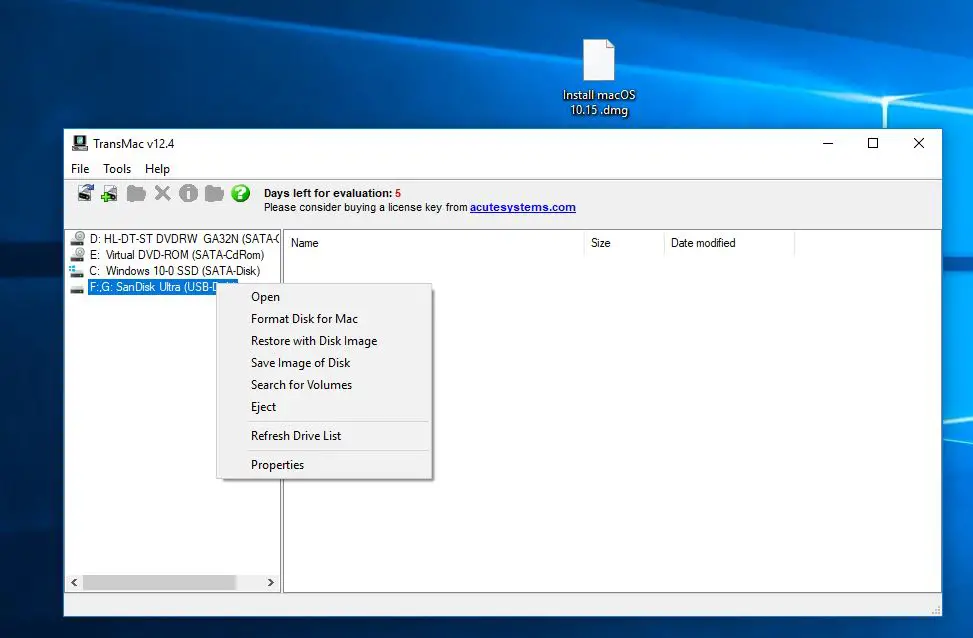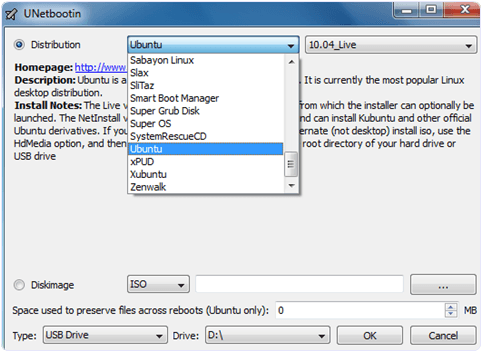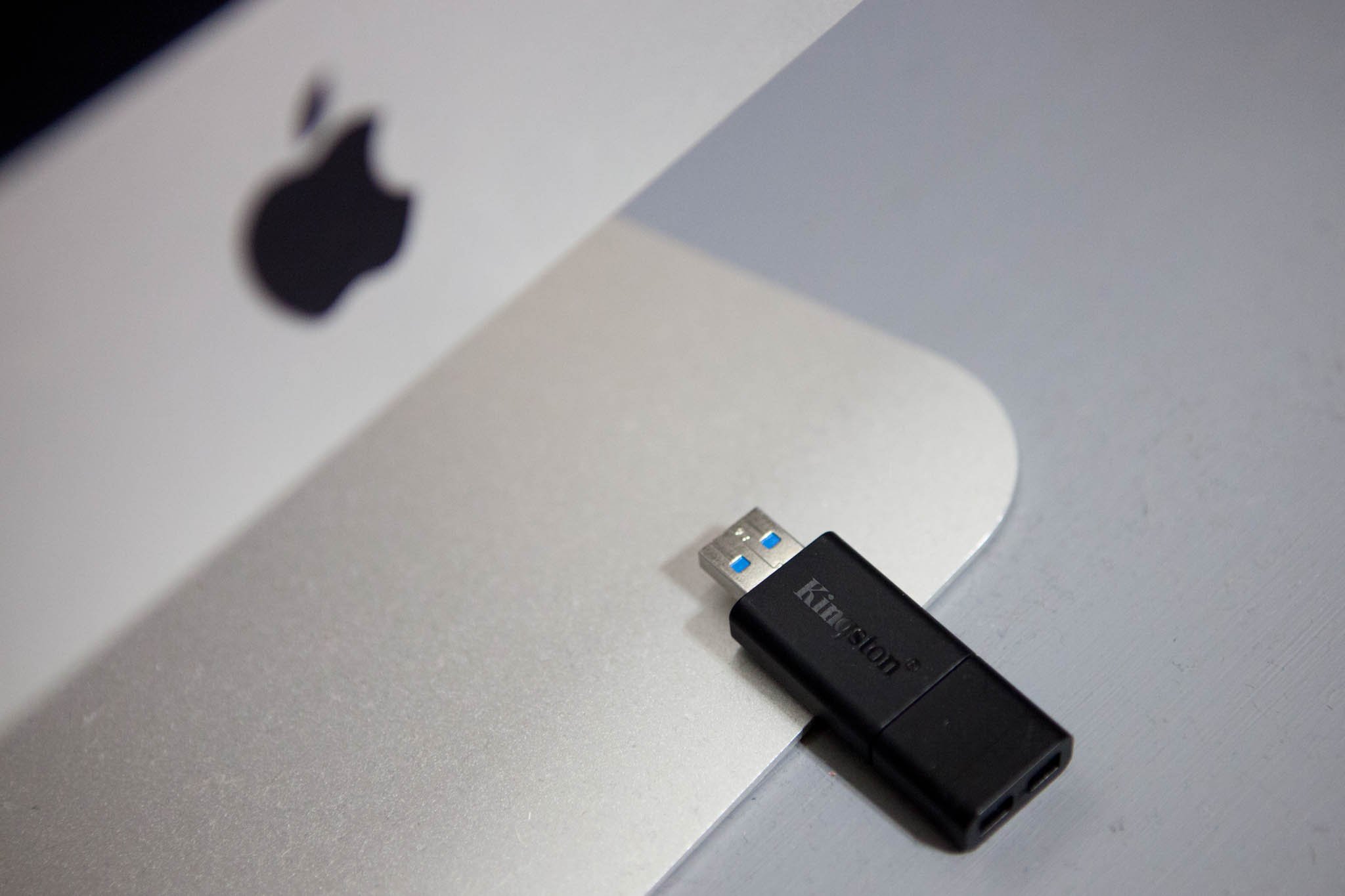- Windows 10 Usb Installer Macos
- Create Windows 10 Installer Usb Mac
- Windows 10 Usb Installer Macbook Pro
These advanced steps are primarily for system administrators and others who are familiar with the command line. You don't need a bootable installer to upgrade macOS or reinstall macOS, but it can be useful when you want to install on multiple computers without downloading the installer each time.
What you need to create a bootable installer
- A USB flash drive or other secondary volume formatted as Mac OS Extended, with at least 14GB of available storage
- A downloaded installer for macOS Big Sur, Catalina, Mojave, High Sierra, or El Capitan
Download macOS
Warning: If you are using this method to create a bootable USB Installer on Windows 10 to install macOS on your Mac computer (Macintosh) then do consider that it might damage your native boot files as we have received some feedback from our visitors. Please do consider this important point; otherwise, you might end up damaging your Macintosh. Windows USB install drives are formatted as FAT32, which has a 4GB filesize limit. If your image is larger than the filesize limit: Copy everything except the Windows image file (sourcesinstall.wim) to the USB drive (either drag and drop, or use this command, where D: is the mounted ISO and E: is the USB. Download Usb Drivers For Windows 10. Free and safe download. Download the latest version of the top software, games, programs and apps in 2021.
- Download: macOS Big Sur, macOS Catalina, macOS Mojave, or macOS High Sierra
These download to your Applications folder as an app named Install macOS [version name]. If the installer opens after downloading, quit it without continuing installation. To get the correct installer, download from a Mac that is using macOS Sierra 10.12.5 or later, or El Capitan 10.11.6. Enterprise administrators, please download from Apple, not a locally hosted software-update server. - Download: OS X El Capitan
This downloads as a disk image named InstallMacOSX.dmg. On a Mac that is compatible with El Capitan, open the disk image and run the installer within, named InstallMacOSX.pkg. It installs an app named Install OS X El Capitan into your Applications folder. You will create the bootable installer from this app, not from the disk image or .pkg installer.
Use the 'createinstallmedia' command in Terminal
- Connect the USB flash drive or other volume that you're using for the bootable installer.
- Open Terminal, which is in the Utilities folder of your Applications folder.
- Type or paste one of the following commands in Terminal. These assume that the installer is in your Applications folder, and MyVolume is the name of the USB flash drive or other volume you're using. If it has a different name, replace
MyVolumein these commands with the name of your volume.
Big Sur:*
Catalina:*
Mojave:*
High Sierra:*
El Capitan:
* If your Mac is using macOS Sierra or earlier, include the --applicationpath argument and installer path, similar to the way this is done in the command for El Capitan.
After typing the command:
- Press Return to enter the command.
- When prompted, type your administrator password and press Return again. Terminal doesn't show any characters as you type your password.
- When prompted, type
Yto confirm that you want to erase the volume, then press Return. Terminal shows the progress as the volume is erased. - After the volume is erased, you may see an alert that Terminal would like to access files on a removable volume. Click OK to allow the copy to proceed.
- When Terminal says that it's done, the volume will have the same name as the installer you downloaded, such as Install macOS Big Sur. You can now quit Terminal and eject the volume.
Use the bootable installer

Determine whether you're using a Mac with Apple silicon, then follow the appropriate steps:
Apple silicon
- Plug the bootable installer into a Mac that is connected to the internet and compatible with the version of macOS you're installing.
- Turn on your Mac and continue to hold the power button until you see the startup options window, which shows your bootable volumes and a gear icon labled Options.
- Select the volume containing the bootable installer, then click Continue.
- When the macOS installer opens, follow the onscreen instructions.
Intel processor
- Plug the bootable installer into a Mac that is connected to the internet and compatible with the version of macOS you're installing.
- Press and hold the Option (Alt) ⌥ key immediately after turning on or restarting your Mac.
- Release the Option key when you see a dark screen showing your bootable volumes.
- Select the volume containing the bootable installer. Then click the up arrow or press Return.
If you can't start up from the bootable installer, make sure that the External Boot setting in Startup Security Utility is set to allow booting from external media. - Choose your language, if prompted.
- Select Install macOS (or Install OS X) from the Utilities window, then click Continue and follow the onscreen instructions.
Learn more

For more information about the createinstallmedia command and the arguments that you can use with it, make sure that the macOS installer is in your Applications folder, then enter the appropriate path in Terminal:
- Big Sur: /Applications/Install macOS Big Sur.app/Contents/Resources/createinstallmedia
- Catalina: /Applications/Install macOS Catalina.app/Contents/Resources/createinstallmedia
- Mojave: /Applications/Install macOS Mojave.app/Contents/Resources/createinstallmedia
- High Sierra: /Applications/Install macOS High Sierra.app/Contents/Resources/createinstallmedia
- El Capitan: /Applications/Install OS X El Capitan.app/Contents/Resources/createinstallmedia
A bootable installer doesn't download macOS from the internet, but it does require an internet connection to get firmware and other information specific to the Mac model.
NOTE: Welcome to the Knowledge Sharing Blog! If you encounter any errors during use, such as error in download link, slow loading blog, or unable to access a certain page on the blog … please notify me. via Contact page. Thanks!
Creating an Ubuntu installation USB is a must when you want to install an operating system on your PC or Laptop.

On our blog, there are many introductory articles and detailed instructions on how to use the USB creation support software to install Ubuntu already.
However, to have more options for you, in this article I will continue to introduce you to another tool to create a usb to install Linux operating systems extremely easily. In addition to Linux, you can also use this software to create a Windows or macOS installation usb easily and completely similar.
#first. What needs to be prepared?
Little introduction: Balena Etcher is an open source software from Balena.io, function to create bootable USB. It supports all operating systems from Windows, macOs to Linux.
The biggest advantage of this software that I find it works on all popular platforms today. This means you can run it under different operating systems like Windows, OSX, and Linux. Very convenient for creating bootable usb anywhere.

Okay, let’s get started now!
first/ A minimum of 4GB USB (depending on the size of the Linux installer, Windows …)
2/ The ISO file or the operating system installation file you want to put on the USB.
Windows 10 Usb Installer Macos
3 / Download Balena Etcher software
Visit the homepage etcher.io => select Download to download the full installation.
Or you can also click on the inverted triangle to choose the Portable version – the instant version doesn’t need to be installed. Or choose to download for other operating systems such as macOs or Linux.

#2. How to Create Ubuntu Installation USB with Balena Etcher
+ Step 1: After downloading, open the file .exe up to install (if full installation) => Click the button I Agree to agree to the terms of use of the software.
Probably no one will ever read this but the better ^^
+ Step 2: After you click the button above, the program will be installed automatically, you wait a moment for the program to finish installing.
+ Step 3: After the installation is complete, the program continues to run automatically without you needing to restart. Or rather, the developer knows that we download it and create a bootable USB so let it run by itself 😛
The interface of the software as shown below.
+ Step 4: Oke, now to start creating USB Boot, first plug your USB into your computer, and click Select image to select the file ISO (operating system installer) that you have prepared.
+ Step 5: Select the operating system file, here I will create one USB install CentOS operating system (Community Enterprise Operating System) 7 current latest, x64 version.
You choose the same for other installers, no different ..
+ Step 6: Then you click the button Select Target To select the device, remember to plug the USB in => then choose the correct USB that you plugged in.
If you plugged in the USB before then select the ISO file and it will automatically recognize the USB.
Create Windows 10 Installer Usb Mac
+ Step 7: Double-check ISO and USB files are Okay or not. All is fine then click the button Flash! to start the USB recording process.
+ Step 8: And now wait, you can see the recording speed below the overall progress to know how much longer you’ll have to wait.
In general, how fast or slow it is depends on the size of the installer and the read / write speed of the USB.
Yes, and after a long time waiting, about half an hour, I have got a USB to install CentOS operating system.
After installing, you can choose Flash Another to create a new USB stick, or mark X to close Etcher’s window.
Windows 10 Usb Installer Macbook Pro
Once done, you can now test directly on your computer, or use the usb boot test software to check if your USB is bootable.
# 3. Epilogue
Yes, I have finished the instructions for you How to create usb install Linux in an extremely simple way.
Overall, Etcher is a worthy application, because it is completely free on all 3 beachfront operating systems, Linux, Windows, macOs and more importantly, it works very well.
In addition to the Free version, Etcher also has a PRO version with the ability to record multiple devices at the same time with extremely high speed. You can learn more on the homepage, wish you success!
CTV: Nguyen Thanh Tung – techtipsnreview
Note: Was this article helpful to you? Don’t forget to rate, like and share with your friends and relatives!
Source: Create USB install Linux, Windows, macOS with Balena Etcher
– TechtipsnReview
